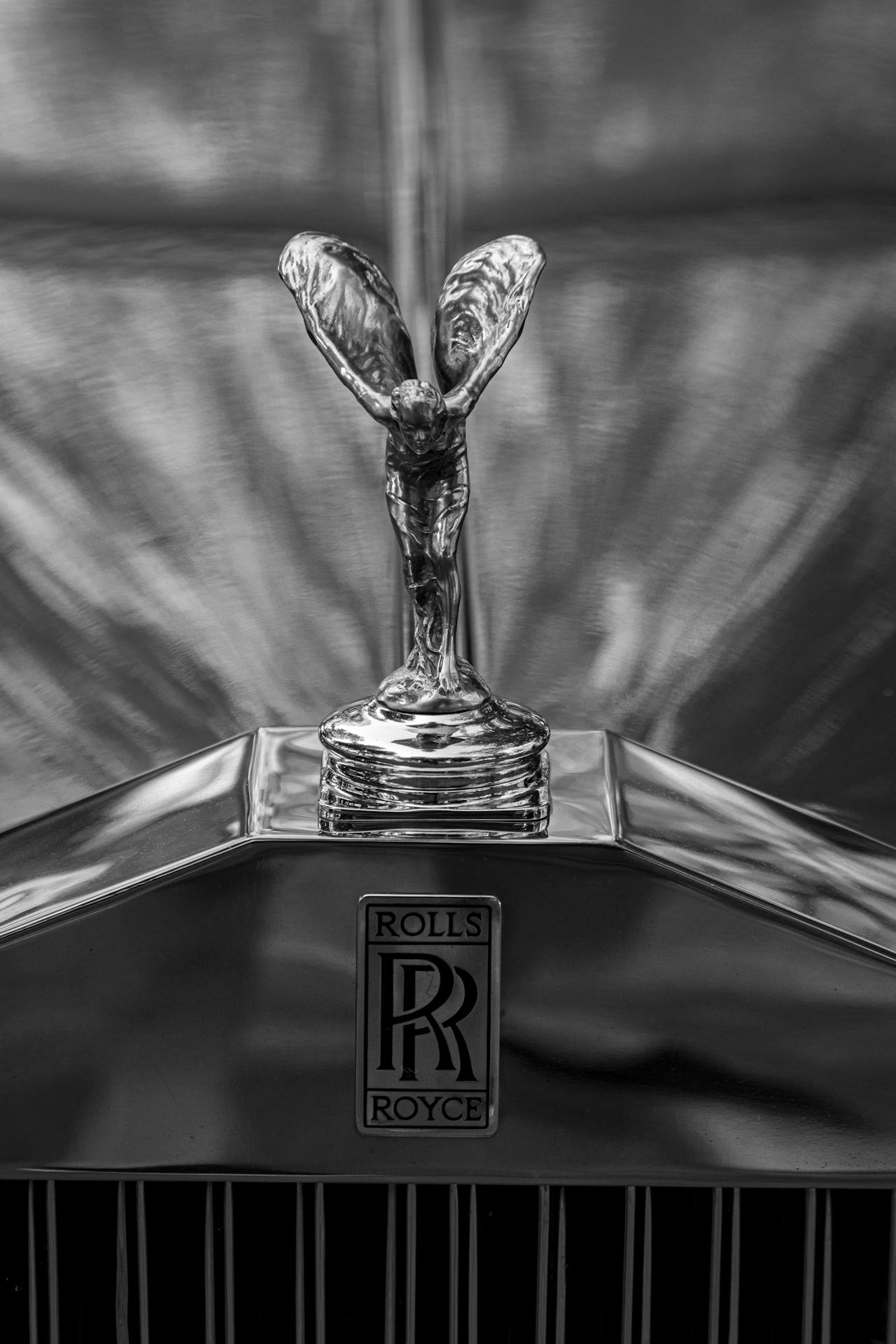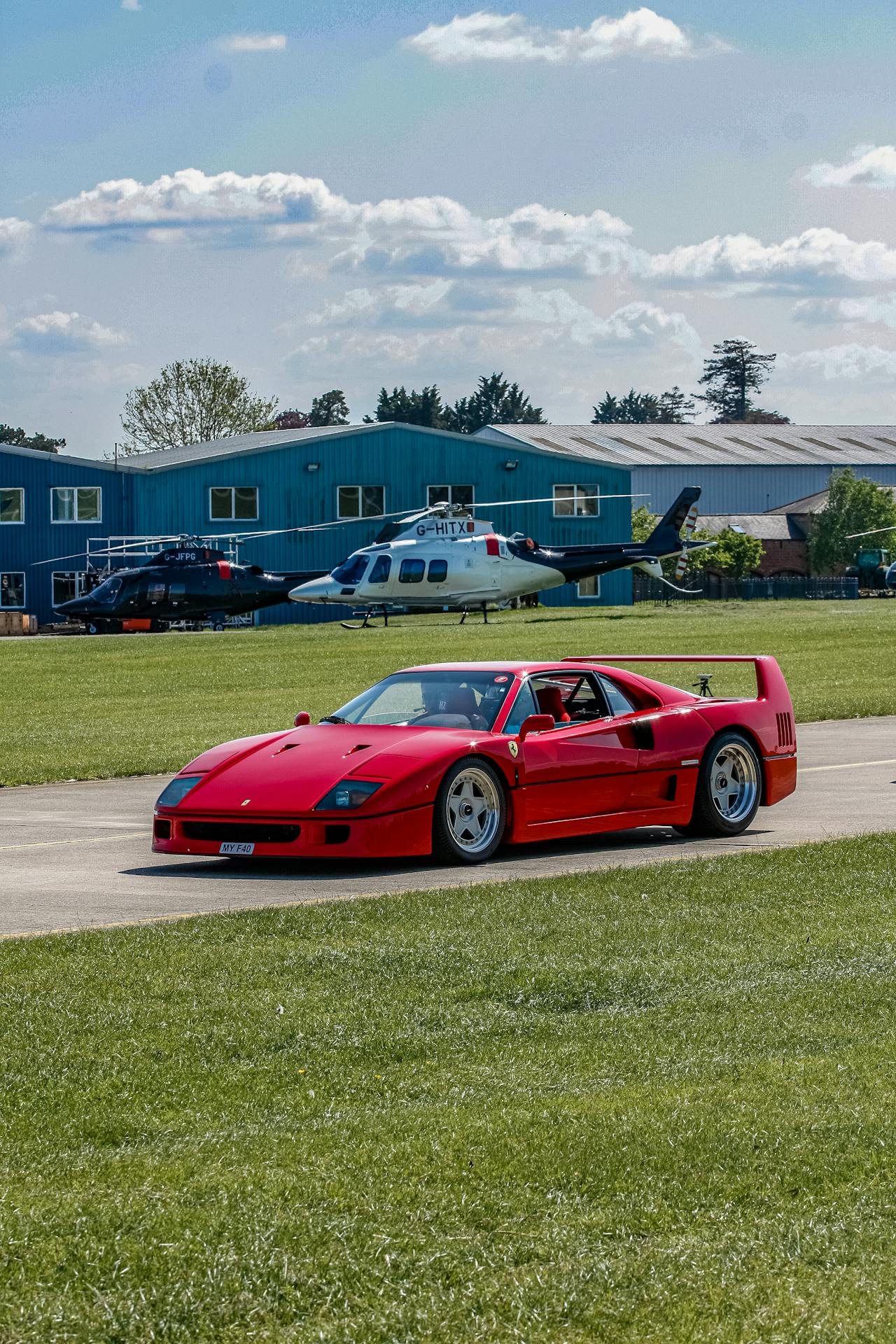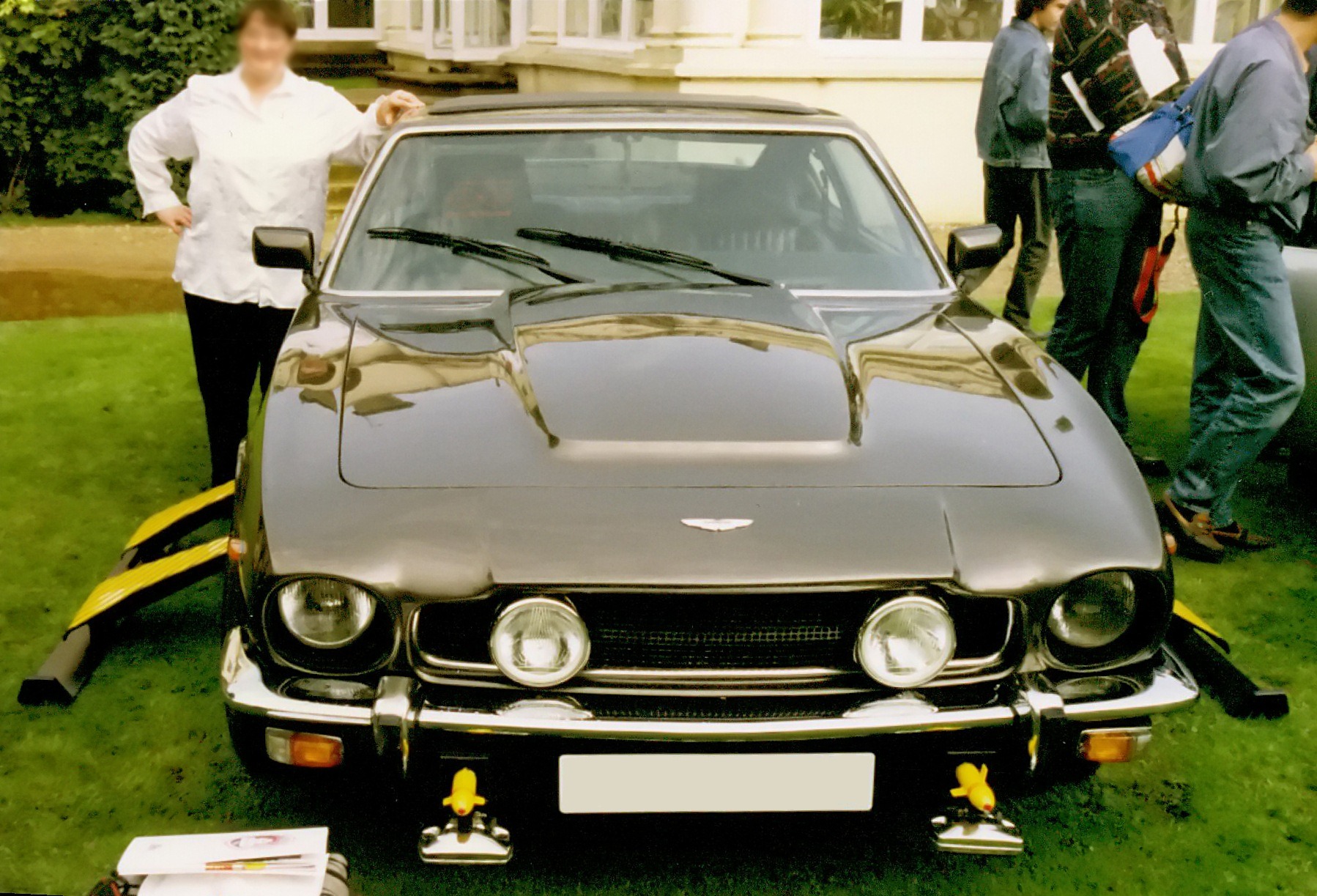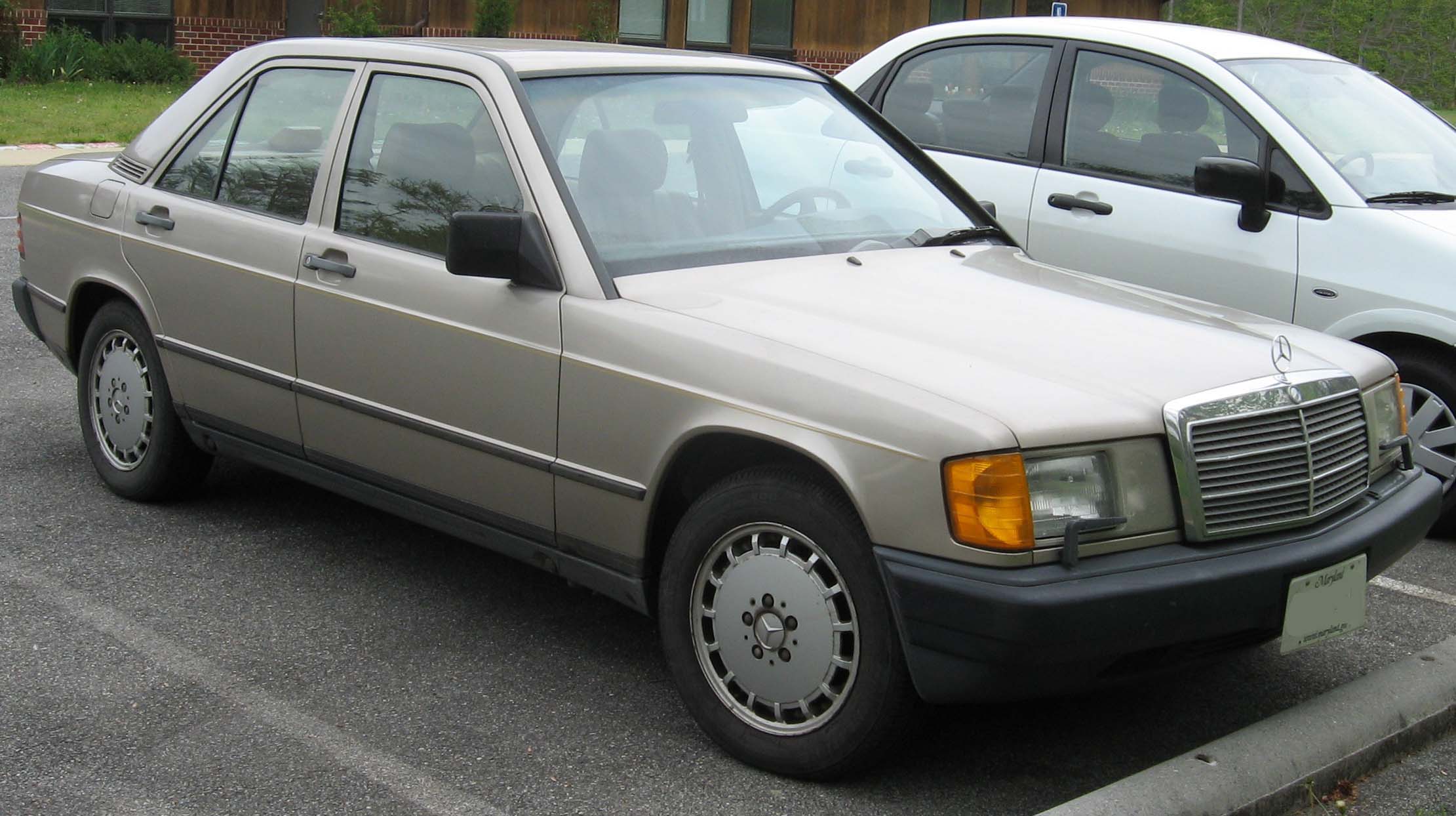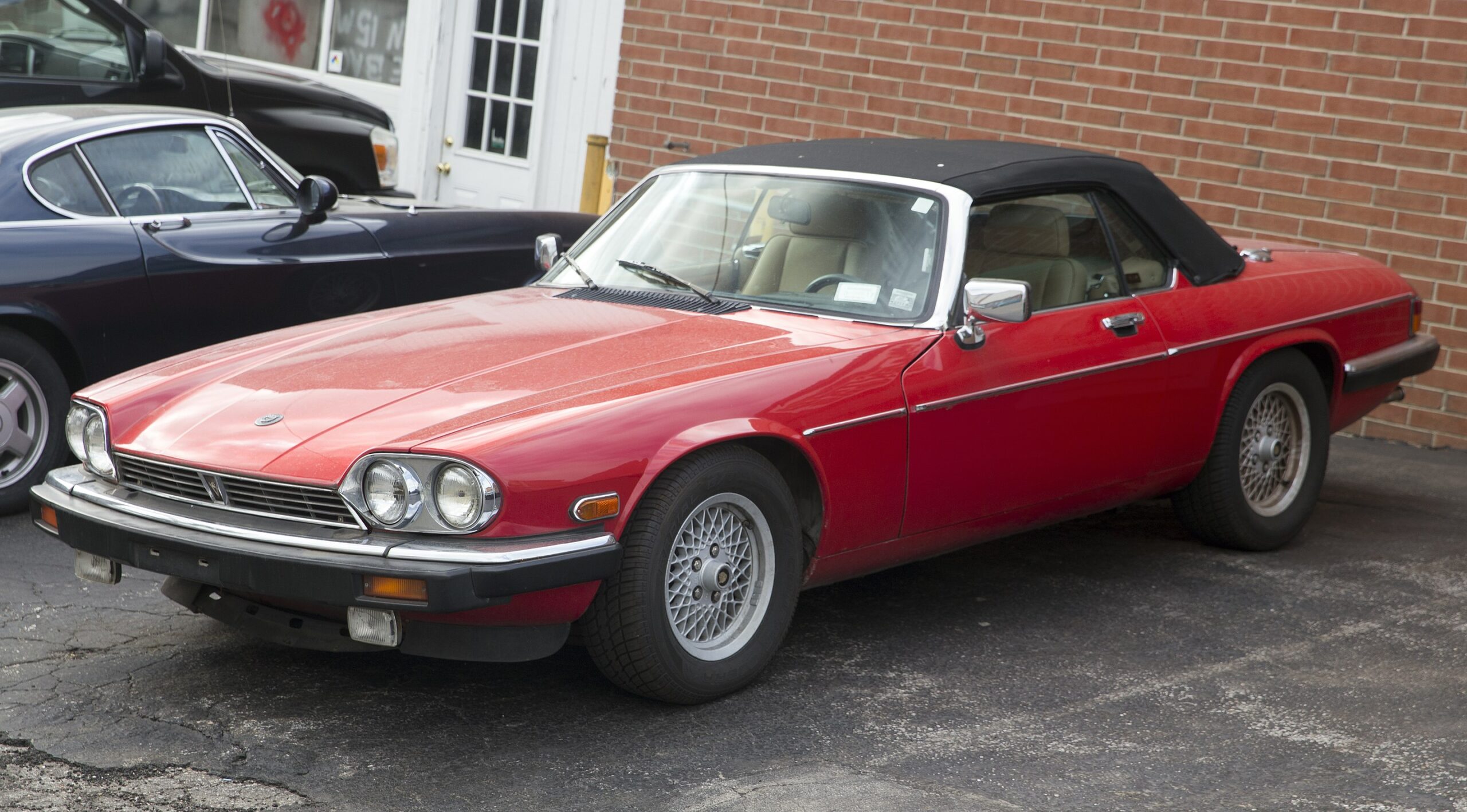The 1980s marked a pivotal era in the automotive world, one that introduced some of the most iconic and luxurious vehicles to ever grace the road. These machines were not merely modes of transportation but embodiments of the technological prowess, design innovation, and luxury of their time. From the sleek and powerful Ferrari F40 to the sophisticated elegance of the Rolls-Royce Corniche, each car on this list has etched its mark in history, becoming symbols of status, performance, and automotive excellence. They were the dreams of many but possessions of few, offering unparalleled experiences that combined adrenaline-pumping speeds with the utmost comfort and opulence. Today, these cars are revered not just for their craftsmanship and performance but as pieces of automotive history that continue to captivate enthusiasts and collectors worldwide.
The low-end specs we see in many cars today were once considered a major revolution in the car industry. Big giants used to celebrate these major accomplishments although they may seem like nothing big today. For example, the concept of power windows, Anti-Lock braking system, power steering, and other such features were once only available in the high-end cars of the particular time period.
Be sure to check out the table below of models, original prices and inflation adjusted prices!
1987 Ferrari F40
If we talk about probably the most expensive car of the 80s, it would be the Ferrari F40. This proved to be a major milestone in the car industry as it was the fastest production car of the time which hit 200 miles per hour right away. The company focused on various elements of the car body and used carbon to lower the weight so as to maximize the speed of this car.
The F40 was introduced to celebrate Ferrari’s 40th anniversary and quickly became one of the most coveted supercars of its time. With a price tag that exceeded $400,000, it was among the most expensive cars available in the 1980s. Its performance and distinctive style have made it a legend.
Although the initial plans were to have only 400 of these units produced, it was changed when the demand for the car grew. More than 1300 units were produced at the time.
Interesting Facts:
- Final Ferrari Approved by Enzo: The F40 was the last Ferrari model approved by Enzo Ferrari himself before his death in 1988.
- First Road-Legal Production Car to Break 200 MPH: With a top speed of 201 mph, the F40 was the first production car to break the 200 mph barrier.
- No Luxury, All Performance: The F40 was designed with performance in mind, lacking any luxury amenities like carpet, door handles, or a radio.
1986 Porsche 959
The 1986 Porsche 959 stands as a testament to automotive ingenuity and the relentless pursuit of high performance, wrapped in an advanced and aerodynamically efficient design. Conceived as the ultimate road-going sports car, the 959 featured state-of-the-art technology for its time, including an innovative all-wheel-drive system, a twin-turbocharged flat-six engine, and adjustable ride height. Its ability to deliver supercar-beating speeds while offering a degree of comfort and practicality was unparalleled, making it one of the most desirable Porsches ever made and a symbol of 1980s technological ambition.
Interesting Facts:
- Technological Marvel: The 959 featured innovative technologies for its time, including an adjustable suspension system and a complex all-wheel-drive system.
- Rally and Racing Success: Porsche developed the 959 for Group B rallying, although the category was disbanded before the car could compete. However, it still saw success in events like the Paris-Dakar Rally.
- Limited Production: Only 292 units were produced, making it one of the rarest and most sought-after Porsche models.
1980 Lamborghini Countach LP400S
The 1980 Lamborghini Countach LP400S is an icon of automotive design, embodying the bold and angular aesthetic that became synonymous with supercar design in the 1980s. With its mid-mounted V12 engine and scissor doors, the Countach not only delivered breathtaking performance but also made a visual statement unlike any other. Its wide stance, aggressive lines, and raw power captured the imagination of car enthusiasts around the world, cementing Lamborghini’s reputation as a maker of dream cars.
Interesting Facts:
- Iconic Wedge Shape: The Countach is celebrated for its dramatic, angular design and scissor doors, setting the standard for future supercars.
- Long Production Run: The Countach was produced for nearly 16 years, with several model variations throughout its life.
- Name Origin: “Countach” is an exclamation of astonishment in the Piedmontese language, reflecting people’s reactions upon seeing the car.
1989 Aston Martin V8 Vantage
The 1989 Aston Martin V8 Vantage represented the zenith of British luxury and performance in the late 80s, combining muscular styling with an unmatched level of sophistication. Known as one of the most powerful cars of its era, the V8 Vantage was a grand tourer that offered a compelling mix of high-speed performance and opulence. Its hand-built quality and bespoke options ensured that each vehicle was as unique as its owner, further enhancing its appeal among the elite.
Interesting Facts:
- Most Powerful Production Engine: At its time of release, the V8 Vantage boasted the most powerful engine in a production car, with 403 hp.
- British Hand-Built Luxury: Each V8 Vantage was hand-built, showcasing Aston Martin’s commitment to craftsmanship and luxury.
- Limited Availability: The V8 Vantage was produced in limited numbers, enhancing its exclusivity and desirability among collectors.
1983 Rolls-Royce Corniche
The 1983 Rolls-Royce Corniche was the epitome of luxury convertible motoring, offering unparalleled levels of craftsmanship, comfort, and timeless elegance. With its sumptuous interior and smooth ride quality, the Corniche provided an unmatched driving experience that was both serene and prestigious. Its classic design and meticulous attention to detail reflected Rolls-Royce’s commitment to automotive excellence, making it a favorite among the world’s most discerning drivers.
Interesting Facts:
- Luxury and Exclusivity: The Corniche was synonymous with luxury, offering unparalleled levels of comfort and bespoke customization options.
- Convertible Elegance: The convertible model, in particular, was highly sought after for its elegant design and open-air driving experience.
- Handmade Craftsmanship: Each Corniche took weeks to build, with meticulous attention to detail in every aspect of its construction.
1987 Mercedes-Benz 560 SEL
The 1987 Mercedes-Benz 560 SEL was a flagship sedan that epitomized the luxury and technological advancement of the late 1980s. As part of the acclaimed W126 series, it combined performance, comfort, and safety in a package that set new standards for the executive car market. Featuring a powerful V8 engine, luxurious amenities, and innovative safety features, the 560 SEL was a choice for those who demanded the best in performance and sophistication.
Interesting Facts:
- Flagship Luxury Sedan: The 560 SEL was the flagship model of the Mercedes-Benz S-Class lineup, offering the best in luxury and technology.
- Innovative Safety Features: It introduced several safety innovations, including airbags and traction control, setting new standards for automotive safety.
- Powerful V8 Engine: Equipped with a powerful 5.6L V8 engine, it offered superior performance combined with luxury.
1984 Ferrari Testarossa
The Testarossa became an icon of the ’80s, thanks to its side strakes and impressive performance. It was a symbol of wealth and extravagance, with a price to match. As many low-end brands produced cars for the common market, Ferrari kept on developing the high-end production cars which were not only beneficial for the firm itself, but other firms benefitted too by slowly adopting the improved technology being used in the vehicles by Ferrari.
More than 10,000 of these cars were sold in 12 years and still considered as one of the most successful vehicles in America. It’s also one of the best cars ever made in the 80s. The car came with a monster V12 engine with an improved storage level and comfortability for the driver and passengers. This was a rear-wheel-drive car which had a manual transmission and was in the form of a two-door coupe as shown in the picture below.
Interesting Facts:
- Icon of the 80s: The Testarossa became an icon of 1980s pop culture, featured in numerous movies, TV shows, and posters.
- Unique Side Strakes: Its distinctive side strakes served both as a styling element and as functional air intakes for the rear-mounted radiators.
- High Production Numbers: Unlike many supercars of its time, Ferrari produced over 7,000 Testarossas, making it one of the most common Ferrari models.
1985 Lotus Esprit Turbo
The 1985 Lotus Esprit Turbo elevated the British sports car to new heights with its blend of sharp, Giugiaro-designed aesthetics and exhilarating performance. The addition of a turbocharger to its engine significantly boosted its power output, making it one of the fastest cars of its time. The Esprit Turbo maintained Lotus’s reputation for producing cars with exceptional handling and agility, wrapped in a body that was as striking as it was aerodynamic.
Interesting Facts:
- Bond Car: The Lotus Esprit gained fame as a James Bond car, particularly in “The Spy Who Loved Me,” where it famously transformed into a submarine.
- High-Performance Turbo: The introduction of the turbocharged model significantly improved performance, making it competitive with other supercars of the era.
- Fiberglass Body: The Esprit featured a lightweight fiberglass body over a steel backbone chassis, contributing to its excellent handling characteristics.
1982 BMW M1
The 1982 BMW M1 was a marvel of automotive engineering, representing BMW’s foray into the mid-engined supercar arena. Developed in collaboration with Lamborghini, the M1 combined a high-performance inline-six engine with a sleek and functional body designed by Giugiaro. It was not only BMW’s first supercar but also served as a homologation model for motorsport, embodying the pinnacle of performance and design from the era.
Interesting Facts:
- BMW’s First Mid-Engined Car: The M1 was BMW’s first and only mid-engined car, designed for both road and track.
- Limited Production Homologation Special: Originally built for racing homologation purposes, only 453 were produced, making it one of BMW’s rarest models.
- Collaboration with Lamborghini: The M1’s development was initially a partnership with Lamborghini, although BMW eventually took over the project.
1989 Bentley Turbo R
The 1989 Bentley Turbo R brought a new dimension to the luxury sedan market, blending traditional Bentley opulence with formidable turbocharged performance. With its impressive torque and refined ride, the Turbo R was designed for the driver who sought the thrill of high speed without compromising on comfort or luxury. Its distinctive styling and handcrafted interior set it apart from its contemporaries, making it a symbol of status and engineering excellence.
Interesting Facts:
- Luxury Meets Performance: The Bentley Turbo R was introduced as a high-performance variant of the Mulsanne, featuring a turbocharged V8 engine that significantly improved power and torque, making it one of the fastest luxury sedans of its time.
- Handling Improvements: Apart from the powerful engine, the Turbo R received substantial improvements in suspension and handling over its predecessors, earning praise for its driving dynamics—a notable achievement for a large luxury car.
- Bespoke Luxury: True to Bentley’s heritage, each Turbo R was customizable, with a lavish interior that offered everything from fine leather to exquisite wood veneers, catering to the bespoke needs of its affluent clientele.
1986 Mercedes Benz 300E AMG Hammer
A sedan like this cost under $20,000 in the 1980s, sometimes even lower than $10,000. However, the full option variant of this car was priced really high at more than $50,000 in 1986. The price tag shocked many of the car experts who considered it as an unexpected move and “something that might not work for long”.
However, the high price of the car was justified by the fact that it was the fastest production Sedan of that time which went from 0 to 100 in less than 5 seconds. The top speed was a little less than the Ferrari F40 at 178 miles per hour. It was produced by AMG when AMG and Mercedes Benz did not have a merger. This car did give Mercedes-Benz a good number of sales. If it was here today, it would cost about $100,000 or even more.
Interesting Facts:
- The Original AMG Hammer: Before Mercedes-Benz officially acquired AMG, the independent tuner created the 300E AMG Hammer, a high-performance version of the standard 300E, and it was one of the fastest sedans of its time, with a top speed of over 180 mph when equipped with the 6.0L V8 engine.
- Sleeper Status: The Hammer combined the understated looks of the W124 chassis with a powerhouse engine, making it a “sleeper” car that could outperform contemporary sports cars while maintaining a low profile.
- AMG’s Masterpiece: The Hammer played a pivotal role in establishing AMG’s reputation as a premier high-performance tuner and paved the way for future Mercedes-Benz AMG models.
1984 Mercedes-Benz W201
You might have seen this car somewhere in the countryside being used by some elderly. When you see cars like these on the road today, you get to know one thing that was persistent in the past but isn’t nowadays. And that is Quality. Older cars are running on the same engines for decades while the newer cars start creating problems in less than 5 years.
The 1984 Mercedes-Benz W201E is what we see as the modern C-Class Mercedes today. There were three different models including 190, 190E, and 190D. Special edition models were produced namely the 190LE for the UK Market, 180E for Australia, and 190E for the United States. It was a four-door sedan with both Petrol and Diesel as well as Automatic and Manual Transmissions.
At its launch, it was priced at about $24,000 and now you might get it for 5 times cheaper than the price. The special variants had a variation in prices too.
Interesting Facts:
- Compact Luxury Pioneer: The W201, known as the 190E, marked Mercedes-Benz’s first foray into the compact executive car segment, setting new standards in build quality, comfort, and reliability for smaller luxury vehicles.
- Aerodynamic Design: The 190E featured a revolutionary aerodynamic design for its time, with a low drag coefficient that helped improve fuel efficiency and high-speed stability.
- Cosworth Collaboration: One of the most famous versions of the W201 was the 190E 2.3-16, developed in collaboration with Cosworth. It featured a high-performance engine and was Mercedes-Benz’s answer to the BMW M3, competing in touring car championships.
Jaguar XJS V12
Although this car was originally produced in 1975, it was held up in the market till 1996 and proved to be one of the most expensive cars of the 80s. The reason why we call it expensive is not that the car was very pricey, but it had a big V12 engine and managing the fuel expenses of this car was one thing that only the elite of the time could do.
It cost about $19,000 and had a V12 engine in it. It was a sports car that was capable of going from 0 to 100 in only 6.8 seconds with a top speed of 150 miles per hour. There were only a few cars that were sold in the automatic variant while all others were sold in the automatic variant. The car generated 283 brake horsepower.
Interesting Facts:
- V12 Elegance: The Jaguar XJS was one of the few cars of its era to be powered by a V12 engine, providing a smooth and powerful driving experience that was synonymous with Jaguar’s luxury grand tourer ethos.
- Long Production Run: Introduced in 1975, the XJS had a remarkably long production run, lasting until 1996. Its design, though polarizing at first, became iconic, representing Jaguar’s commitment to luxury and performance.
- Successful Racer: Despite its grand tourer design, the XJS was successful in racing, particularly in the European Touring Car Championship and the Trans-Am series in the United States, showcasing its performance capabilities.
Lexus XF10 LS400 1989
The first generation of Lexus LS400 was produced in the year 1989. Today, we see this car as one of the relatively affordable ones but when it was produced, it was not much easy to buy. The base price was $35,000 which was relatively lower than the competitors including Mercedes-Benz. As a result, the car was quite successful and hit the markets right away.
You might be surprised to know that the development of this car took the manpower of 60 designers, 1,400 engineers, and 2,300 technicians along with more than 200 support workers. The top speed was 155 miles per hour while the 0 to 60 for this car was at 8.5 seconds. The thing which attracted many buyers was that it had a quieter cabin producing only 58 dB of sound.
Interesting Facts:
- Brand Introduction: The LS400 was the vehicle that launched the Lexus brand, Toyota’s luxury division, in 1989. It was designed to compete directly with the best luxury sedans from Europe, offering superior comfort, reliability, and value.
- Engineering Marvel: Over $1 billion was invested in the development of the LS400, which included innovations like an ultra-smooth 4.0L V8 engine and an electronically controlled automatic transmission, setting new standards for luxury car performance and quietness.
- Market Disruptor: The introduction of the LS400 significantly disrupted the luxury car market, offering features and build quality that rivaled more established luxury brands at a lower price point, quickly establishing Lexus as a major player in the luxury segment.
Nissan Datsun 280ZX Turbo
The Nissan Datsun 280ZX was another great production car of the era which was produced in the year 1978 and was up in the market till 1983 after which it was replaced by newer models. The car was a mix of sports and luxury because it had many different features of a luxury car but the shape and engine of a sports car. Today, we see the Nissan Datsun in the form of Nissan Fairlady Z and its other variants as well.
There were 2 models available for this car, 2.0L, and 2.8L. Each of these had a further variation with a turbo and non-turbo engine. The price of this car was $30,000 and was considered as one of the best ones for car enthusiasts. There were comfortable seats, softer suspension, and better soundproofing in this car.
Interesting Facts:
- Turbocharged Performance: The introduction of the Turbo variant in the early 1980s gave the 280ZX a significant performance boost, making it one of the fastest Japanese sports cars of its time.
- Luxury and Performance: Unlike its more spartan predecessors, the 280ZX focused more on luxury and comfort, with the Turbo model adding performance to the mix, embodying the grand tourer spirit with a sports car pedigree.
- Successful in Racing: The 280ZX had a successful racing career, particularly in IMSA GT racing in the United States, where it won numerous championships and races, proving its capabilities on and off the track.
1987 Buick Grand National GNX
If we talk about the fastest production car of 1987, it would be the Buick Grand National GNX which is one of the rarest cars in the world. A little less than 500 units were produced and distributed around America and some other states. The car depicts a true picture of the Classic American Muscle series making it one of the best cars of the 80s.
The car was used in multiple races as well as it was considered to be very expensive. The car had a twin-turbo V6 engine generating 165 horsepower. The engine was quite powerful and well developed with significant improvements being brought to it from time to time. Going from 0 to 60 was possible in only 4.7 seconds.
Interesting Facts:
- Muscle Car Legend: The GNX (Grand National Experimental) was a special version of the Grand National, developed in collaboration with McLaren Performance Technologies/ASC, making it one of the fastest American production cars of the 1980s.
- Limited Production: Only 547 GNX models were produced, making it a rare and highly sought-after collector’s car today.
- Unassuming Powerhouse: Despite its unassuming appearance, the GNX was a powerhouse, with a turbocharged V6 engine that outperformed many V8s of its era, earning it a place in muscle car history.
Porsche 944 Turbo
Last but definitely one of the best ones on our list of Most Expensive Luxury Cars of 1980s is the Porsche 944 which was manufactured between 1982 to 1991. With a front-engine and rear-wheel drive, this car produced a great level of torque providing the ultimate luxury and sports experience side by side. The Porsche 944 had naturally aspirated or turbocharged engine variants both of which turned out quite successful.
There were 163,000 cars produced in 9 years while the car was available in coupe and convertible versions as well. Manual transmission had 5 gears while the Automatic had 3. This car cost $45,000 and is still considered one of the remarkable vehicles produced by Porsche during the 80s.
Interesting Facts:
- Balanced Performance: The Porsche 944 Turbo (also known as the 951) was praised for its near-perfect weight distribution and handling, making it one of the best-handling sports cars of its era.
- Turbocharged Power: The 944 Turbo featured a turbocharged 2.5L inline-four engine that provided excellent performance, making it faster than many of its contemporaries.
- Racing Success: The 944 Turbo had a successful racing career, including wins in endurance racing and in its class at Le Mans, showcasing its durability and performance capabilities.
Original and Inflation Adjusted Prices
| Car Model | Original Price (USD) | 2023 Inflation-Adjusted Price (USD) |
|---|---|---|
| 1987 Ferrari F40 | $400,000 | $1,159,311.33 |
| 1986 Porsche 959 | $225,000 | $671,676.00 |
| 1980 Lamborghini Countach LP400S | $125,000 | $445,564.60 |
| 1989 Aston Martin V8 Vantage | $175,000 | $478,083.43 |
| 1983 Rolls-Royce Corniche | $190,000 | $619,787.18 |
| 1987 Mercedes-Benz 560 SEL | $75,000 | $217,370.87 |
| 1984 Ferrari Testarossa | $190,000 | $601,735.13 |
| 1985 Lotus Esprit Turbo | $55,000 | $169,113.09 |
| 1982 BMW M1 | $115,000 | $386,388.38 |
| 1989 Bentley Turbo R | $152,500 | $416,615.56 |
| 1986 Mercedes-Benz 300E AMG Hammer | $60,000 | $179,113.60 |
| 1984 Mercedes-Benz W201 | $21,000 | $66,507.57 |
| Jaguar XJS V12 | $36,000 | $110,692.21 |
| 1989 Lexus XF10 LS400 | $35,000 | $95,616.69 |
| Nissan Datsun 280ZX Turbo | $18,000 | $60,478.18 |
| 1987 Buick Grand National GNX | $29,000 | $84,050.07 |
| Porsche 944 Turbo | $25,000 | $76,869.59 |
Conclusion
Reflecting on the most expensive luxury cars of the 1980s offers a fascinating glimpse into an era when extravagance and engineering merged to produce vehicles that pushed the boundaries of what was possible. The legacy of these cars extends beyond their initial price tags, influencing the design and technology of future generations of luxury automobiles. As we admire these timeless classics, their stories remind us of the relentless pursuit of perfection and the passion for automotive excellence that defines the luxury car industry. The 1980s may have been their dawn, but their allure endures, proving that true luxury and performance are timeless.

